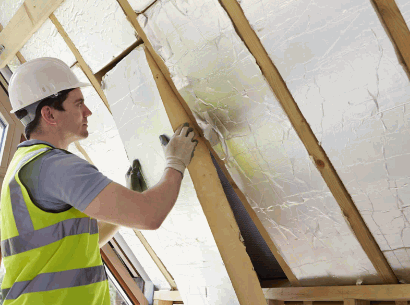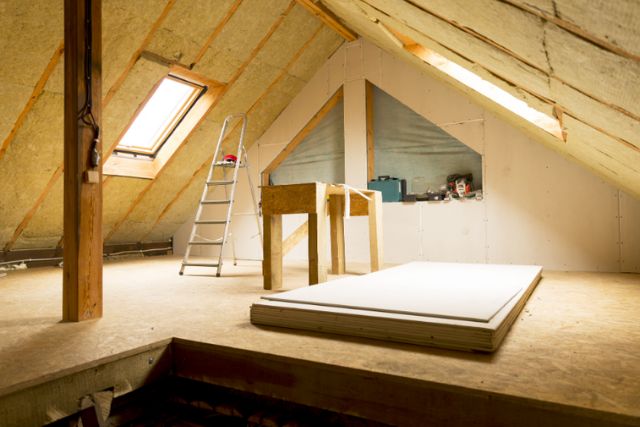Thinking of transforming your loft into a cosy living space? A loft conversion can be a fantastic way to add extra room to your home, but insulation is key to ensuring it's comfortable and energy-efficient.
This article explores what a loft conversion entails, why insulation matters, and the various types of insulation available. It also guides you through choosing the right insulation and the steps to effectively insulate your loft.
Discover the benefits of a well-insulated loft and how it can enhance your home's value and comfort.
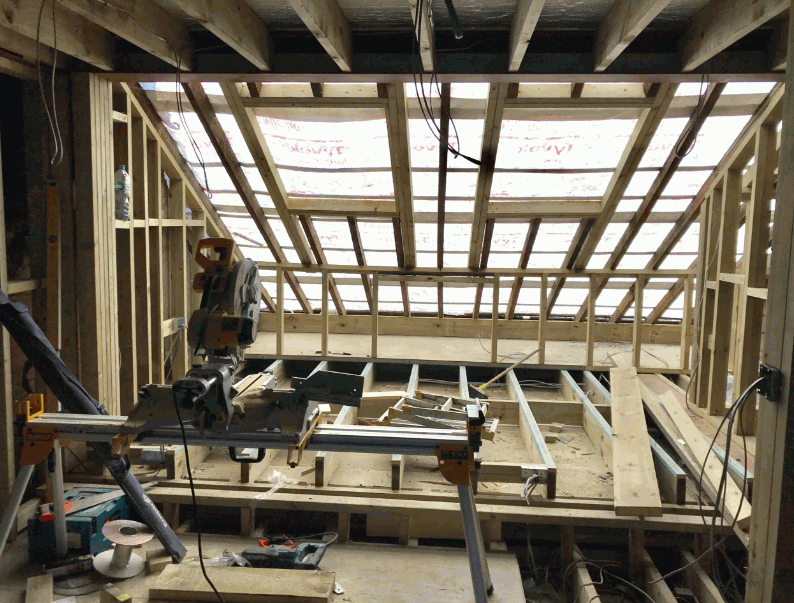
What Is A Loft Conversion?
A loft conversion is the process of transforming unused loft space into a functional living area, thereby enhancing the overall value of the home. It typically involves compliance with Building Regulations to ensure safety and energy efficiency, as well as proper planning to utilise residual loft space effectively.
This transformation can significantly increase living space, add rooms such as bedrooms or office areas, and often becomes a stylish feature of modern homes.
Look into: How To Convert Loft Into Room

Why Should I Insulate My Loft Conversion?
Insulating your loft conversion is critical for improving energy efficiency and minimising heat loss, which not only keeps your living space comfortable but also reduces energy bills over time.
Proper loft insulation, using high-quality insulation materials, directly impacts the thermal performance of your home while contributing to a lower U-value, ensuring that energy does not escape through the roofing structure.
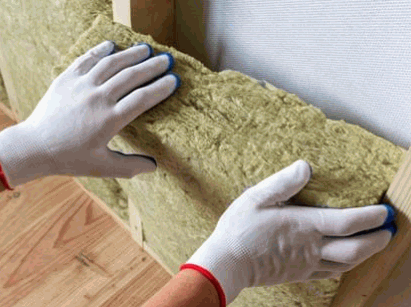
What Are The Different Types Of Insulation?
There are several types of insulation materials available for loft conversions, each with unique properties and advantages, including mineral wool, polystyrene boards, and rigid insulation.
Understanding these different insulation options, including rigid insulation and insulation boards, is essential for addressing thermal bridging, enhancing sound insulation, and achieving optimal thermal performance in your loft conversion.
Spray Foam Insulation
Spray foam insulation is a versatile and effective insulation solution that expands upon application, filling gaps and reducing thermal bridging effectively in your loft conversion, making it a great DIY project.
This unique characteristic allows it to create a seamless air barrier, which is vital for regulating temperature and enhancing comfort levels within the space. The benefits of using this type of insulation extend beyond mere heat retention; moisture control is another significant advantage it provides.
By helping to prevent mould growth and water damage, spray foam insulation not only safeguards your home but also contributes to energy efficiency. In comparison to traditional insulation methods, such as fibreglass or cellulose, it outperforms in numerous ways:
- Higher R-value: Offers superior thermal resistance, keeping your loft warm in winter and cool in summer.
- Air sealing capabilities: Forms a tight seal, preventing unwanted draughts that can undermine heating or cooling efforts.
When considering loft conversions, integrating spray foam and other insulation solutions can be a game changer, leading to overall enhanced performance and longevity of the insulation structure.
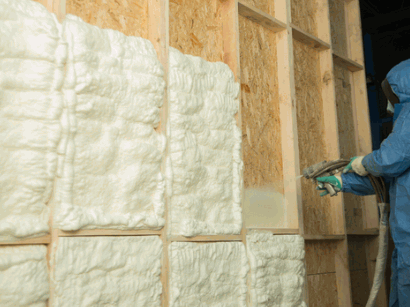
Fiberglass Insulation
Fibreglass insulation is a widely used and cost-effective option that offers excellent thermal performance and is available in batts or loose-fill forms, making it easy to install in various loft spaces. This versatile material not only contributes to energy efficiency but also has long-lasting durability compared to other insulating materials.
Homeowners often appreciate its affordability, as it provides a budget-friendly solution without sacrificing quality. Fibreglass insulation effectively reduces heat loss during the winter months and keeps spaces cooler in the summer, ensuring a comfortable living environment year-round.
- Budget-friendly: Cost-effective choice for many projects
- High thermal resistance: Enhances energy efficiency
- Compatibility: Easily works with various insulation boards and sheathing
Ultimately, investing in fibreglass insulation, along with mineral wool or polystyrene boards, brings substantial benefits, making it a top choice among property owners and builders alike.
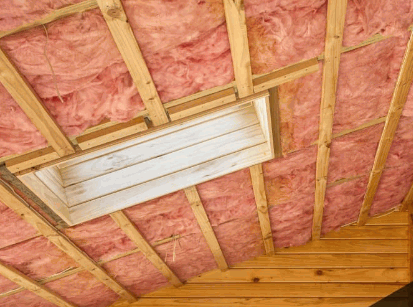
Cellulose Insulation
Cellulose insulation is an eco-friendly option made from recycled newspaper, providing a sustainable building solution that significantly reduces environmental impact while effectively insulating your loft conversion.
Not only does cellulose insulation offer a remarkable green alternative, but it also excels in energy efficiency, minimising heat loss and thus lowering energy bills. As a result, homeowners can experience enhanced comfort all year round.
The installation process can be performed either as loose-fill or dense-packed, adapting to various spaces and ensuring complete coverage. Cellulose insulation has impressive performance metrics, including a high R-value, which directly correlates to thermal resistance. When considering the environmental benefits and superior insulating properties, it's clear that this material stands out among traditional options.
- Eco-friendly and sustainable
- Effective heat retention
- Versatile installation methods
- High R-value performance
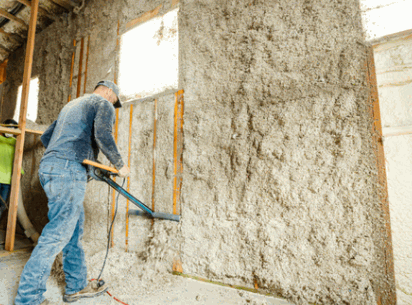
Mineral Wool Insulation
Mineral wool insulation is known for its exceptional sound insulation properties and thermal performance, making it an ideal choice for loft conversions that require noise reduction alongside energy efficiency.
This versatile material not only provides a barrier against unwanted sound, ensuring peaceful living spaces, but it also excels in managing moisture levels. Effective moisture control is crucial, especially in areas prone to condensation, as it helps prevent mould and mildew build-up, safeguarding both the structure and inhabitants.
- Soundproofing: Mineral wool effectively absorbs sound waves, leading to quieter interiors.
- Moisture Management: Its inherent properties allow it to regulate humidity, enhancing indoor air quality.
- Energy Efficiency: The thermal performance keeps spaces warmer in winter and cooler in summer.
These characteristics make mineral wool a top contender for those looking to improve their home's comfort and functionality and overall home value.
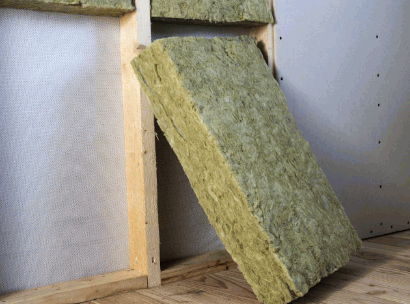
Reflective Insulation
Reflective insulation is a unique option that works by reflecting heat away from the living spaces, making it particularly effective in warm climates while promoting energy efficiency in loft conversions.
This type of insulation employs a shiny surface that actively creates a barrier against radiant heat, ensuring that homes remain cooler during the scorching summer months. Notably, its effectiveness is heightened in regions where high temperatures are common.
Reflective insulation can also play a pivotal role in cooler climates, especially during winter by reflecting indoor heat back into the living space. This dual functionality can lead to significant cost savings throughout the year.
- Increases overall comfort levels
- Reduces the need for excessive heating or cooling
- Helps lower energy bills while promoting sustainability
Utilising this innovative insulation can significantly contribute to energy efficiency, making it a wise choice for homeowners seeking to enhance both comfort and performance.
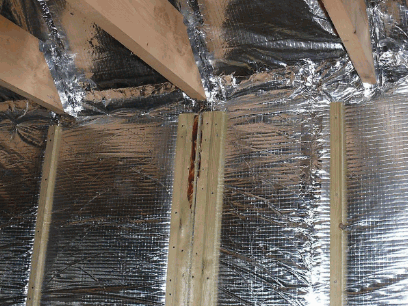
How To Choose The Right Insulation For My Loft Conversion?
Choosing the right insulation for your loft conversion involves evaluating various factors such as your budget, insulation thickness, and the overall thermal performance you wish to achieve, along with utilising insulation expertise and understanding loft conversion costs to guide your choices effectively.
Consider The Climate
When choosing insulation for your loft conversion, it is crucial to consider your local climate to determine the most appropriate insulation materials that will ensure optimal thermal performance throughout the year and effective ventilation.
Understanding how different climates can impact insulation choices is essential for achieving energy efficiency. In warmer regions, reflective materials that reduce heat absorption can be vital. On the other hand, colder climates may benefit from thicker, more robust insulation options to retain warmth.
To aid in making informed decisions, consider the following factors:
- Material Type: Fibreglass, foam boards, or cellulose all have varying properties that adapt to temperature changes.
- Climate Zones: Be aware of whether your area experiences extremes in heat, cold, or humidity.
- Energy Efficiency: Choosing the right insulation can significantly lower heating and cooling costs.
By carefully assessing these variables, one can take significant steps towards enhancing comfort while reducing energy expenses.
Assess The Space
Assessing the available residual loft space is essential for determining the insulation thickness and overall loft conversion costs, as it impacts how much insulation can effectively be installed.
Particularly when considering both the height and accessibility of the loft. When evaluating these physical attributes, one should pay close attention to factors such as the vertical distance from the floor to the peak, as well as the ease of mobility throughout the space. This evaluation helps in making informed decisions regarding insulation types, which in turn affects energy efficiency.
- The height should ideally allow for a minimum of 2.4 metres for comfortable living.
- Access routes must be safe and compliant with building regulations.
It’s important to consult with professionals who can guide you through the necessary calculations and recommend appropriate materials based on the specific conditions of the loft. Understanding these aspects ensures that the loft conversion process is both effective and cost-efficient.
Determine Your Budget
Determining your budget for insulation solutions is a crucial step in the loft conversion process, as it influences the quality of materials you can afford and whether you may consider a DIY project.
A well-thought-out budget not only provides clarity on insulation options available but also plays a significant role in deciding whether to hire professionals or take on the challenge of a DIY approach. Understanding the relationship between cost and quality can lead to smarter choices that ultimately enhance energy efficiency.
Here’s a closer look at how budgeting can impact insulation decisions:
- Types of insulation: Different materials vary significantly in price. For example, spray foam may be more expensive but offers superior performance.
- DIY vs. Professional Installation: If the budget is tight and skills are sufficient, opting for a DIY project can save money. One must consider the potential for errors that could lead to higher costs in the long term.
- Long-term savings: Investing a little more upfront in higher-quality insulation can lead to substantial savings on energy bills over time.
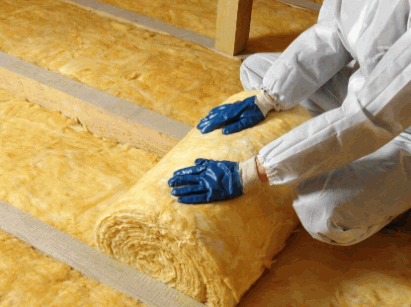
What Are The Steps To Insulate My Loft Conversion?
Insulating your loft conversion involves a series of steps that ensure effective heat retention, including:
- Selecting appropriate insulation materials
- Installing them properly to minimise thermal bridging
- Adding a vapour barrier to control moisture
Prepare The Space
Preparing the loft space involves clearing out any loft storage, ensuring proper ventilation paths, and consulting insulation expertise to create a suitable environment for insulation installation.
To ensure an efficient insulation process, it is essential to first clear away any unnecessary items that may hinder access. This often includes boxes, old furniture, and other stored belongings that can clutter the area. Once a clear space is established, attention must shift to assessing the existing ventilation. Proper airflow is critical to prevent moisture build-up, which can lead to mould growth and compromise the insulation's effectiveness.
Therefore, it is necessary to:
- check for vents or gaps that allow for air circulation
- evaluate the airflow dynamics within the space
- ensure that insulation materials do not obstruct these ventilation paths
Consulting with insulation experts can provide valuable insights into the best materials and techniques suitable for the specific loft conditions, ultimately ensuring that the insulation serves its purpose efficiently and effectively.
Choose The Insulation Material
Choosing the right insulation material is vital for achieving the desired thermal conductivity and energy efficiency in your loft conversion, with options ranging from mineral wool to rigid insulation boards.
With so many choices available, including spray foam and cellulose, it is essential to identify which options best suit specific requirements. Each material offers unique thermal properties that can significantly influence the overall comfort and energy costs of the space.
For example, rigid insulation boards provide excellent thermal resistance, making them a popular choice among homeowners aiming for maximum energy efficiency.
To determine the best fit for a loft conversion, one must consider factors such as:
- Budget constraints
- Environmental impact
- Ease of installation
By assessing these elements, you can make a well-informed decision that enhances both the comfort and sustainability of the converted space.
Install The Insulation
Proper insulation installation is crucial for enhancing thermal performance and must be executed using appropriate insulation techniques to ensure optimal coverage throughout the loft conversion.
Effective insulation can significantly impact energy efficiency and comfort within a space, making the installation process an essential consideration for any renovation project. To achieve maximum effectiveness, the following steps can be employed:
- Assessment: Begin by evaluating the existing space to determine the type and amount of insulation required.
- Preparation: Ensure the loft area is clean, dry, and free of any debris that might disrupt the insulation process.
- Material Selection: Choose high-quality materials that will provide the necessary thermal performance for the region's climate.
- Installation: Apply the insulation methodically, ensuring full coverage, particularly in corners and hard-to-reach areas.
- Air Sealing: Apply sealants and barriers to prevent air leaks, which can compromise the overall effectiveness of the insulation.
By following these meticulous steps, one can ensure a well-insulated loft that retains heat efficiently, reducing energy costs and enhancing indoor comfort.
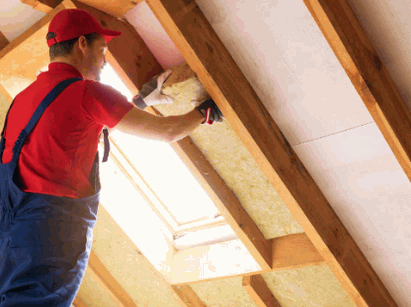
Seal Any Gaps
Sealing any gaps during the insulation process is essential to prevent thermal bridging, which can lead to significant heat loss and undermine the energy efficiency of your loft conversion.
In terms of achieving a tightly sealed environment, the choice of sealing methods plays a crucial role. Effective gap sealing not only mitigates the risk of thermal bridging but also enhances overall comfort levels within the living space. Various sealing materials, such as sealant, foam insulation, and draught stripping, can be employed to ensure that every nook and cranny is addressed.
- Using spray foam is highly effective for irregular gaps.
- Draught stripping works brilliantly on windows and doors.
- Sealant provides a seamless finish for smaller cracks.
These materials each serve to block air leakage, significantly reducing heat loss and optimising energy efficiency. By prioritising these sealing methods, homeowners can not only save on energy bills but also enjoy a more consistent indoor temperature, making their loft conversions both economical and comfortable.
Add A Vapor Barrier
Adding a vapour barrier is a critical step in managing moisture control, preventing condensation, and ensuring the long-term effectiveness of insulation in your loft conversion.
In a well-designed insulation system, incorporating a vapour barrier prevents the infiltration of moist air, which can lead to a host of issues ranging from mould growth to structural damage. The role of a vapour barrier becomes even more vital in areas prone to high humidity.
By effectively limiting the amount of moisture that penetrates the insulation, it preserves the energy efficiency of the space. This, in turn, not only enhances comfort but also reduces energy costs over time.
Understanding the science behind vapour barriers can help homeowners make informed decisions. Here are a few key points:
- Moisture Control: Acting as a shield, it blocks vapour from entering the insulation.
- Durability: Extending the lifespan of insulation materials by reducing wear from moisture.
- Energy Efficiency: Helping maintain temperature, which can lower heating and cooling costs.
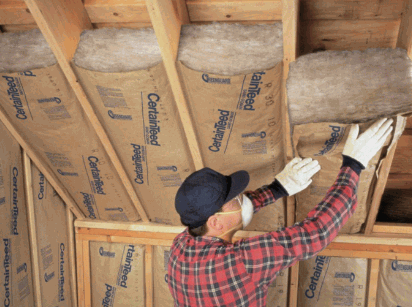
What Are The Benefits Of Insulating My Loft Conversion?
Insulating your loft conversion provides numerous benefits, including enhanced energy efficiency, reduced energy bills, improved sound insulation, and a significant increase in your home's value, making it a worthwhile investment.
Energy Efficiency
One of the main benefits of loft insulation is its ability to enhance energy efficiency by significantly reducing heat loss through the roof, leading to lower energy bills and a more comfortable home.
The science behind this phenomenon lies in the principle of heat transfer, which involves the movement of warm air upwards and outwards through poorly insulated spaces. Without adequate insulation, homes can lose up to 25% of their heat through the roof, creating a significant impact on energy consumption.
By installing loft insulation, individuals can effectively combat this heat loss, ensuring that the warmth generated by heating systems remains trapped inside the living area.
- This reduction in heat escape not only lowers energy bills but also enhances overall comfort levels within the home.
- Homes with proper insulation maintain a consistent temperature, contributing to a cosy environment all year round.
- In real terms, homeowners can save substantial amounts on their energy expenses, making loft insulation not just an eco-friendly choice but a financially savvy one as well.
Noise Reduction
Loft insulation also plays a crucial role in noise reduction, providing effective sound insulation that enhances the acoustic performance of your home by minimising external noise transmission.
Along with improving comfort levels, the selection of suitable insulation materials can significantly impact overall effectiveness in dampening sound.
Some popular options include:
- Fibreglass - Known for its excellent thermal and acoustic properties, this material can absorb sound waves effectively.
- Foam Board - This is particularly useful for hard surfaces, where its rigid structure can help prevent sound transmission.
- Cellulose - Made from recycled paper products, it offers both thermal insulation and sound absorption capabilities.
When properly installed, these materials work synergistically to create a quieter living environment, contributing to enhanced relaxation and focus in daily activities. Improved sound insulation can lead to better privacy, making it an essential consideration for modern households.
Improved Comfort
Improved comfort is one of the most immediate benefits of loft insulation, as it maintains a consistent temperature throughout the home and reduces energy bills associated with heating.
This effective barrier plays a crucial role in regulating indoor climates, ensuring that warmth remains trapped when it’s cold outside and keeping cooler air in during hotter months. By minimising heat loss, loft insulation not only makes living spaces more enjoyable but also significantly reduces the need for constant heating and cooling. This leads to less reliance on energy-consuming systems, driving down those escalating energy bills. Energy efficiency becomes achievable, allowing homeowners to enjoy an ideal living environment without the worry of high costs.
- Reduces draughts
- Enhances temperature regulation
- Lower energy costs
Ultimately, this translates into both improved comfort and increased savings over time, making loft insulation a wise investment for any household.
Increased Property Value
Investing in loft insulation not only improves energy efficiency but also increases your property value, making your loft conversion a financially advantageous decision in the long run.
This enhancement not only appeals to environmentally-conscious homeowners but also attracts potential buyers looking for energy-efficient solutions that can translate into lower utility bills. As individuals become more aware of the impact of their living spaces on the planet, a well-insulated loft emerges as a highly desirable feature.
Effective insulation solutions can also lead to significant savings over time, as they minimise heat loss during colder months and reduce the need for excessive heating.
- Increased comfort in living areas
- Enhanced property market appeal
- Potentially higher resale values
Ultimately, taking the plunge on loft insulation not only protects the environment but also ensures homeowners reap financial rewards in a bustling property market.
